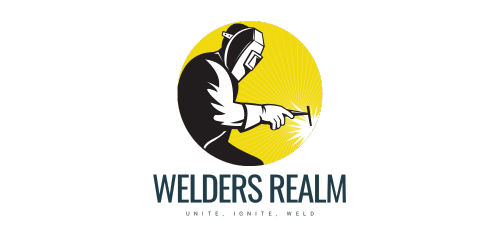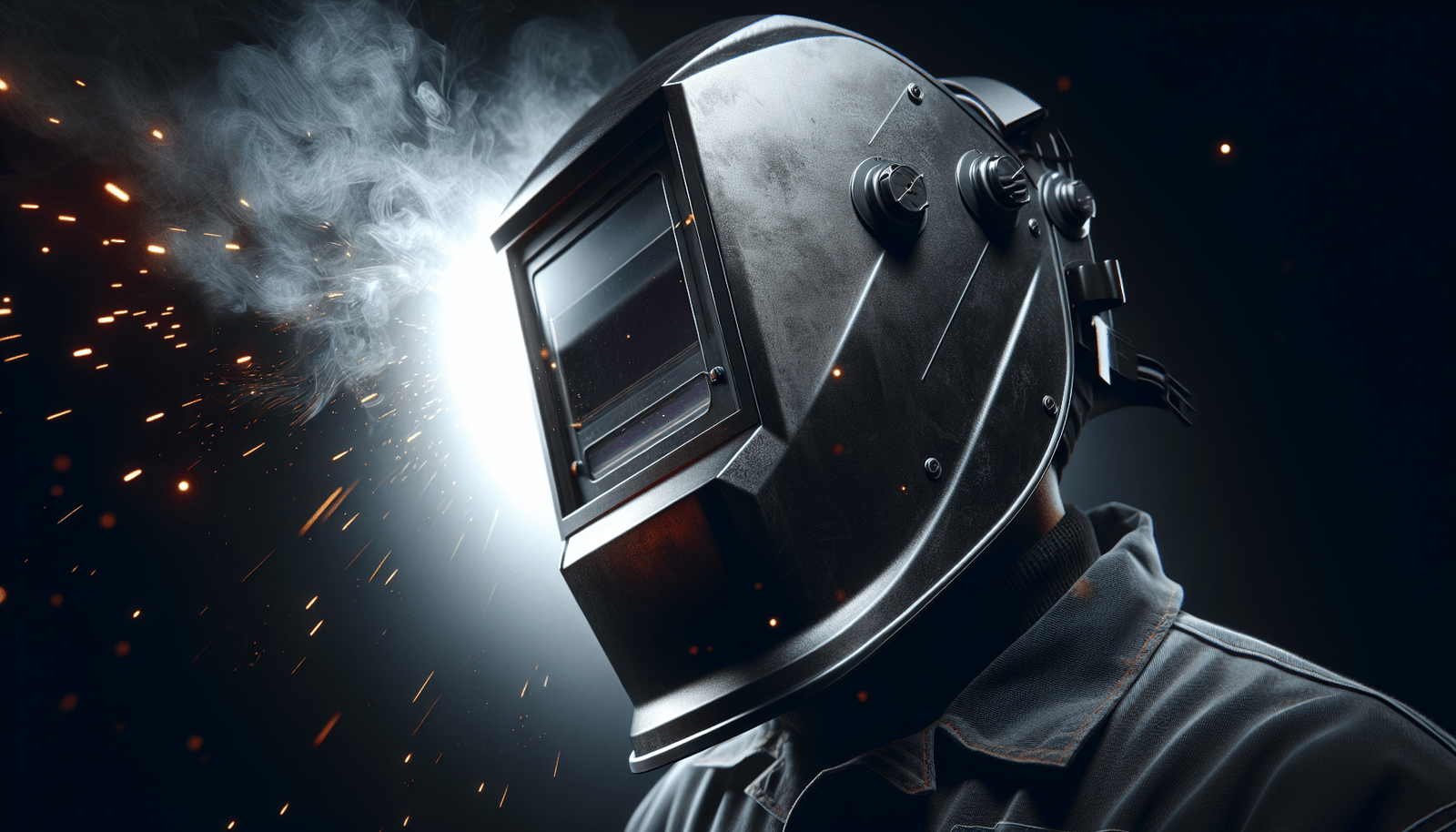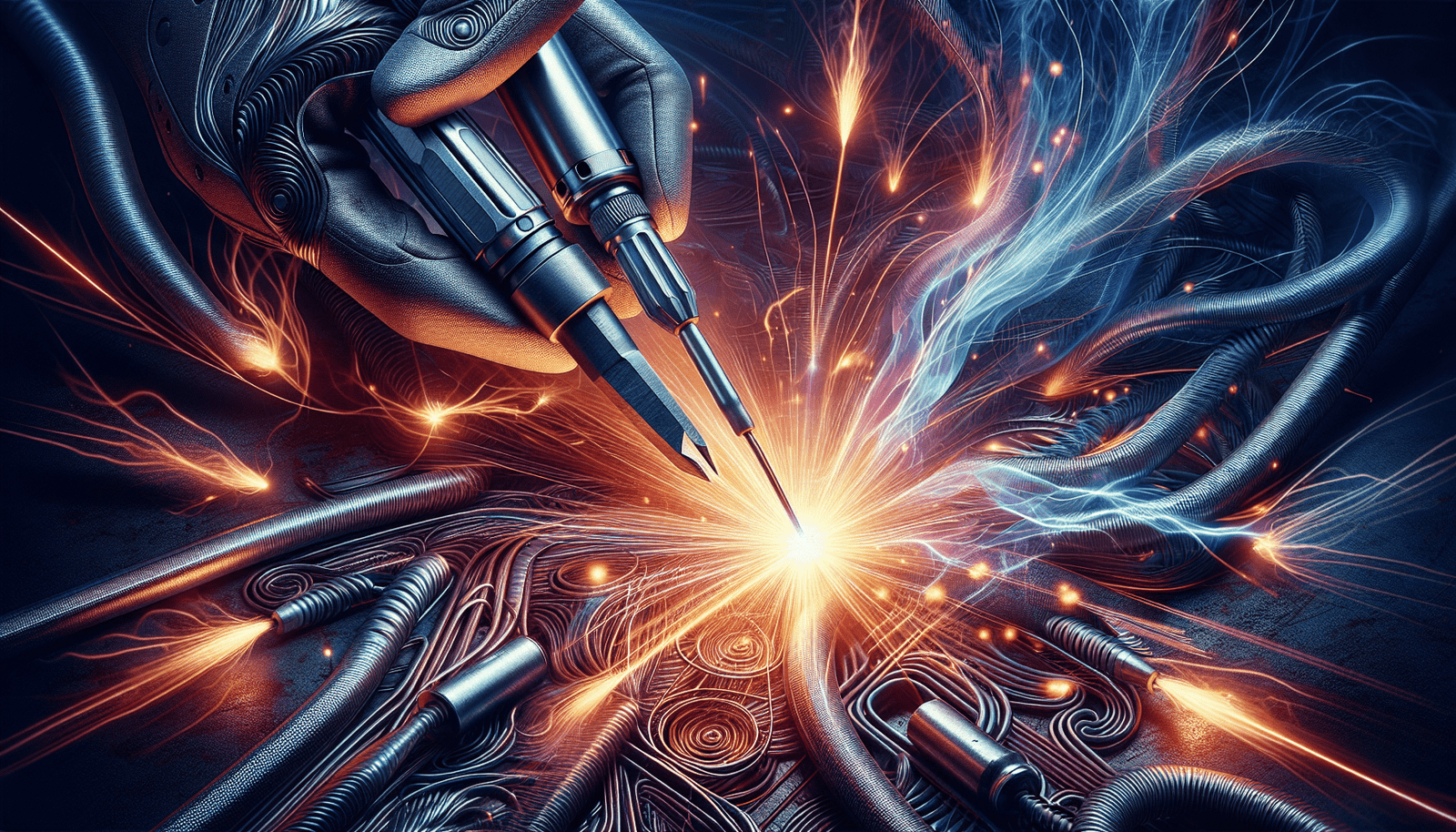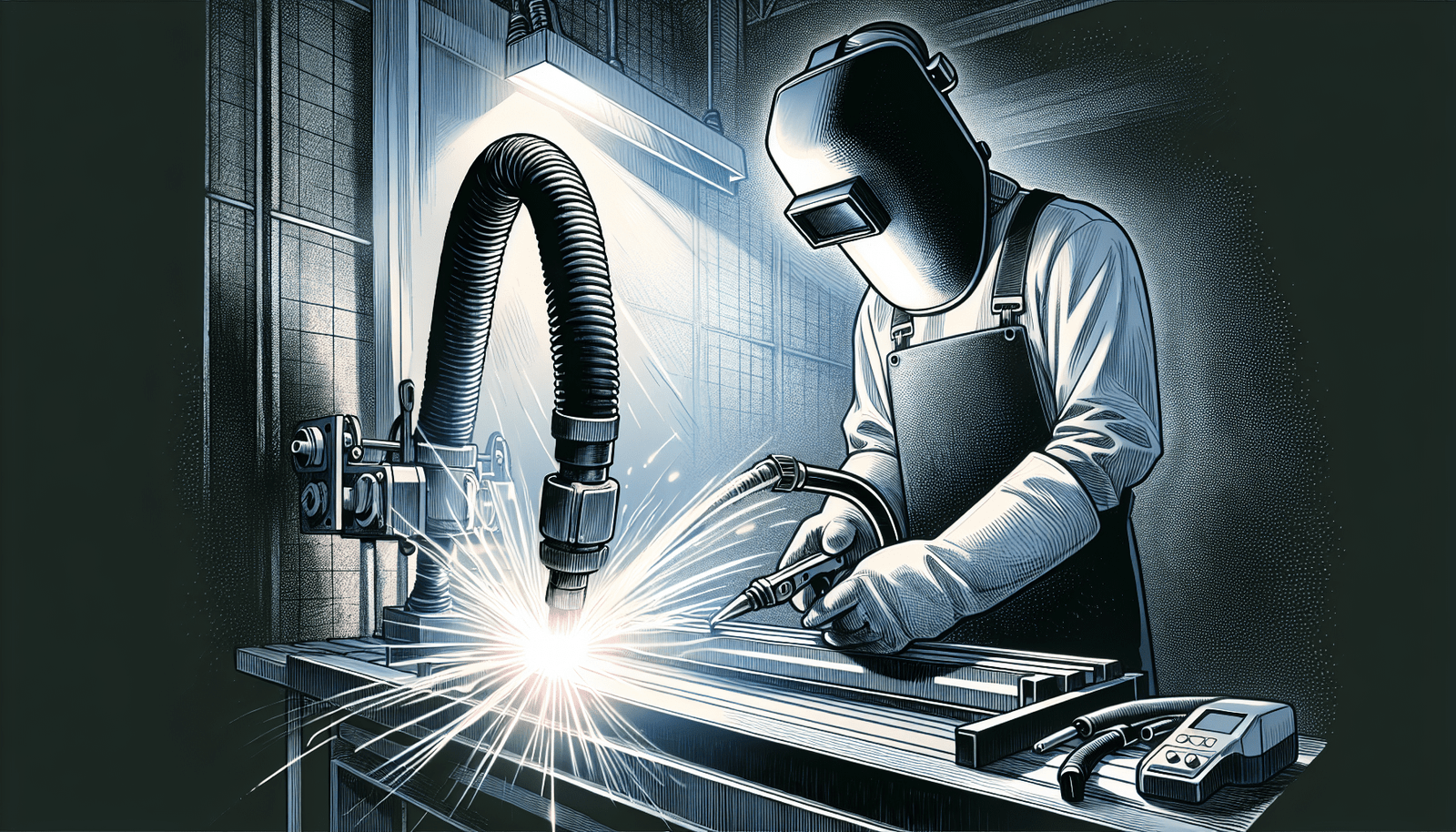Are you a welder looking to ensure your safety on the job? Look no further! This article will provide you with a concise list of essential welding safety equipment that every welder should have. From protective clothing to eye and face protection, we’ve got you covered. Stay tuned for valuable tips on how to prioritize your safety while working with intense heat and bright sparks. Don’t compromise on your well-being – equip yourself with the necessary tools and knowledge to enhance your protection.
Auto-Darkening Welding Helmet
An auto-darkening welding helmet is a crucial piece of safety equipment that every welder should have. It not only protects your eyes from the intense light and harmful radiation produced during welding but also offers convenience and efficiency in your work.
The most significant advantage of an auto-darkening welding helmet is its ability to automatically adjust the shade of the lens based on the welding arc. In traditional welding helmets, you have to manually change the lens shade every time you strike an arc, which can be time-consuming and disruptive to your workflow. With an auto-darkening helmet, you can keep the helmet on throughout the welding process, allowing for a smoother and more efficient work experience.
Another key benefit of an auto-darkening welding helmet is the level of protection it provides. The lens of the helmet is typically made of a special filter that blocks harmful ultraviolet (UV) and infrared (IR) radiation emitted during welding. This not only safeguards your eyes from potential damage but also reduces the risk of long-term vision problems such as arc eye or cataracts.
When selecting an auto-darkening welding helmet, it is important to consider certain factors. The most crucial aspect is the helmet’s responsiveness to arc detection and shade adjustment. Look for a helmet with fast switching speeds, ideally within 1/25,000th of a second, to ensure immediate protection.
The helmet should also have a wide field of view, allowing you to see your workpiece clearly without straining your neck or compromising your safety. Adjustable sensitivity and delay settings are also desirable features that let you customize the helmet’s performance according to your specific welding needs.
Some recommended brands and models of auto-darkening welding helmets include Miller Electric, Lincoln Electric, 3M Speedglas, and Jackson Safety. These brands have a reputation for producing high-quality helmets that prioritize both safety and comfort. Keep in mind that the best helmet for you may depend on factors such as your budget, welding process, and personal preferences.
Leather Welding Gloves
Leather welding gloves are an essential component of welding safety gear. Beyond their obvious purpose of protecting your hands from heat, sparks, and debris, these gloves offer several additional benefits that enhance your overall safety while working.
The primary role of leather welding gloves is to provide heat resistance. Welding produces extremely high temperatures, and without adequate hand protection, you risk severe burns and other hand injuries. Leather gloves are specifically designed to withstand the heat generated during welding and provide a barrier between your skin and the hot metal surfaces.
When selecting leather welding gloves, it’s crucial to consider a few key factors. The first is the type of leather used. Generally, cowhide is the most commonly used leather due to its durability and heat resistance. However, goatskin and pigskin are also popular choices and offer their own unique advantages, such as increased dexterity or flexibility.
Another important consideration is the glove’s cuff length. Longer cuffs provide added protection to your wrists and lower arms, guarding against sparks and burns. However, shorter cuffs may offer greater freedom of movement, which can be beneficial in certain welding applications.
Top-rated leather welding gloves on the market include the Tillman 875, Lincoln Electric Traditional MIG/Stick Welding Gloves, Revco GM1611 Top Grain Leather Cowhide MIG Welding Gloves, and Caiman White-Goat Grain Leather Welding Gloves. These gloves are highly regarded for their quality, durability, and heat resistance, making them excellent choices for welders of all levels.
Welding Jackets
Wearing a welding jacket is of utmost importance for your safety while welding. It provides protection not only against burns and sparks but also against potential fire hazards, hot metal, and UV radiation.
The primary significance of wearing a welding jacket is its ability to shield your upper body, including your torso, arms, and neck, from heat and sparks. The jacket is typically made from flame-resistant materials, such as leather or flame-resistant cotton, which are capable of withstanding high temperatures. This ensures that even if sparks or molten metal come into contact with your clothing, it will not catch fire and cause serious injuries.
When choosing a welding jacket, there are a few key factors to consider. Firstly, the material of the jacket is crucial. Genuine leather jackets are known for their durability and excellent resistance to heat and flames. However, if you prefer a lighter and more breathable option, flame-resistant cotton jackets can be an excellent choice.
The fit of the jacket is also important. It should be snug enough to prevent any loose clothing from getting caught on objects or machinery but not too tight to restrict your movements. Additionally, consider the jacket’s closure system. Jackets with snaps, buttons, or high-quality zippers provide a secure closure that keeps sparks and debris out.
High-quality welding jackets in the market include the Miller Electric Split Leather Welding Jacket, Lincoln Electric Traditional FR Cloth Welding Jacket, Revco Black Stallion Truguard Cotton Welding Jacket, and Tillman 9230 Leather Welding Jacket. These jackets are trusted by welders worldwide for their superior protection, durability, and comfort.
Respirators
Respirators play a crucial role in ensuring the safety and health of welders, as they protect against harmful fumes, gases, and particles in the welding environment. Inhaling these hazardous substances can lead to serious respiratory problems, such as lung damage or respiratory illnesses, making a respirator a vital piece of welding safety equipment.
To understand the need for respirators in welding, it’s essential to know the types of hazards you may encounter. Welding processes produce various harmful fumes, such as metal oxides, ozone, and nitrogen dioxide. Additionally, certain welding materials, such as galvanized steel, release toxic gases when heated. By wearing a respirator, you can filter out these fumes and gases, preventing them from entering your lungs.
When selecting a respirator, it’s crucial to check both its fit and filtration efficiency. An ill-fitting respirator can compromise its effectiveness, allowing hazardous substances to seep in. Look for respirators that have adjustable straps and a secure seal around your face to ensure a proper fit.
Filtration efficiency is equally important. Respirators are equipped with filters that trap airborne particles and fumes. Ensure that the respirator you choose has the appropriate filter for the specific welding process you are performing.
Some of the best respirators for welders include the 3M Rugged Comfort Half Facepiece Reusable Respirator, Miller Electric ML00895 LPR-100 Half Mask Respirator, 3M 8511 Particulate Respirator, and North Safety 7700 Series Half Mask Respirator. These respirators are known for their comfort, durability, and high filtration efficiency, providing welders with reliable respiratory protection.
Welding Boots
Welding boots are an essential piece of safety equipment that should not be overlooked. They provide protection to your feet from hot metal, sparks, heavy objects, and potential electrical hazards. Investing in the right pair of welding boots is key to ensuring both safety and comfort on the job.
The necessity of welding boots arises from the hazardous conditions welders face. Dropping molten metal or sparks can quickly cause severe burns and injuries if they come into contact with your feet. Additionally, welding environments often involve heavy machinery and potential electrical hazards, making it crucial to have boots with protective features.
When selecting welding boots, certain criteria should be considered. The material of the boots is paramount. Full-grain leather is highly recommended due to its durability, heat resistance, and ability to withstand the harsh conditions of welding. Look for boots with reinforced toes and soles for added protection against impact and punctures.
Ensure that the welding boots you choose have a non-slip and oil-resistant sole. This will prevent accidental slips and falls, particularly when working on slippery surfaces often encountered in welding environments. Also, consider the height of the boots. Opting for boots that provide ankle support and coverage can help prevent sprains and protect your lower legs.
Trusted brands for welding boots include Red Wing Shoes, Timberland PRO, Caterpillar, and Ariat. These brands offer a range of welding-specific boots that meet industry safety standards and provide comfort and durability throughout your work day.
Welding Caps
Welding caps may seem like a minor piece of safety equipment, but they play a crucial role in protecting your head and hair from sparks, heat, and debris. They are designed to fit securely and comfortably under your welding helmet, providing an additional layer of protection during welding operations.
The primary protection offered by welding caps is against sparks and hot debris that may fall onto your head or hair while welding. Even with the protection of a welding helmet, tiny particles may still find their way through the gaps. A welding cap acts as a barrier, reducing the risk of burns and other injuries to your scalp and hair.
When buying a welding cap, there are a few factors to consider. First, ensure that the cap is made from flame-resistant materials. This is crucial to prevent the cap from catching fire if it comes into contact with sparks or hot debris. Look for caps made from cotton or fire-resistant fabrics such as twill or denim.
The fit of the welding cap is also important. It should be snug enough to stay securely in place during welding but not too tight to cause discomfort. Choose a cap that covers your entire head to provide full protection.
Respected manufacturers of welding caps include Black Stallion, Lincoln Electric, Revco, and Tillman. These brands offer a variety of styles and designs, ensuring you can find a welding cap that suits your preferences and provides the necessary protection.
Safety Glasses
Safety glasses are a critical component of welding safety, as they provide protection for your eyes against debris, sparks, and intense light emitted during welding. The proper selection of safety glasses can prevent eye injuries and help maintain clear visibility while working.
The importance of safety glasses in welding cannot be overstated. While a welding helmet offers protection for your face and eyes, safety glasses provide an additional layer of defense. They shield your eyes from potential flying debris, sparks, and metal fragments that may not be blocked by the helmet’s lens.
When selecting safety glasses for welding, it is crucial to consider the lens color and material. Different welding processes emit varying levels of light and radiation, so lens color selection is important to provide adequate protection. Darker lens shades, such as shades 8 or 9, are suitable for high-amperage welding processes like arc welding. Lighter shades, such as shades 3 or 4, are ideal for lower-amperage processes like TIG welding.
Polycarbonate lenses are highly recommended for welding safety glasses due to their impact resistance and durability. They are lightweight and shatterproof, providing reliable protection against potential hazards.
Top-rated safety glasses for welders include 3M Virtua CCS Protective Eyewear, Jackson Safety V30 Nemesis Safety Glasses, Gateway Safety 6980 Cover2 Safety Glasses, and Uvex S0360X Ultra-spec 2000 Safety Eyewear. These glasses are designed specifically for the demands of welding, featuring high-quality lenses and ergonomic designs for comfort and durability.
Ear Protection
Ear protection is often overlooked in welding safety, but it is crucial to preserve your long-term hearing health. Welding processes generate high levels of noise, which can lead to hearing loss and other auditory issues if proper precautions are not taken.
The importance of ear protection during welding lies in the loud noise produced by welding arcs, grinding operations, and metalworking machinery. Sustained exposure to these high decibel levels can cause irreversible damage to your ears. Wearing ear protection mitigates these risks, ensuring that your hearing remains intact.
When it comes to ear protection, there are two main options to consider: earplugs and earmuffs. Earplugs are inserted into the ear canal, forming a seal to reduce noise levels. They are lightweight, portable, and allow for greater mobility while working. Earmuffs, on the other hand, encompass the entire ear, providing greater noise reduction and protecting against loud impulse sounds. They can be less intrusive and easier to put on and take off.
Selecting the most comfortable and reliable ear protection is crucial for ensuring that you wear it consistently. Some top-rated options for welders include 3M Peltor Optime 105 Over-the-Head Earmuff, Howard Leight LPF-1 Max Single-Use Earplug, 3M Earsoft Neons Corded Earplug, and Decibullz Custom Molded Earplugs. These ear protection options offer excellent noise reduction and are designed to provide comfort during extended use.
Welding Aprons
A welding apron is an essential piece of safety equipment that acts as a protective barrier between your body and the hazards present in the welding environment. It offers protection against sparks, molten metal, and welding splatter, keeping your clothing and skin safe from potential burns and injuries.
The role of a welding apron in safety management cannot be understated. The apron is typically made from flame-resistant materials, such as leather or fire-resistant fabrics, to ensure that it does not catch fire easily. It covers your torso, front, and upper legs, providing ample coverage against sparks and hot materials.
When selecting a welding apron, the material and size are crucial considerations. Leather is the most commonly used material for welding aprons due to its durability, heat resistance, and ability to repel sparks. Fire-resistant fabrics such as cotton or denim are also popular choices as they offer lightweight and breathable options.
The size of the apron should provide sufficient coverage to protect your upper body effectively. Ensure that it is long enough to cover your torso and adequately wide to wrap around your sides. Adjustable straps and buckles can allow for a comfortable fit and easy adjustments.
Some of the best welding apron brands to consider include Revco Black Stallion, Lincoln Electric, Miller Electric, and Tillman. These brands offer a range of aprons designed specifically for welding, focusing on both safety and comfort.
Welding Screens
Welding screens are an invaluable safety measure in welding environments. They provide a physical barrier between the welding area and surrounding spaces, protecting nearby workers, equipment, and materials from sparks, UV radiation, and harmful fumes.
The benefits of using welding screens are numerous. They create a defined work area and help contain sparks and welding debris within that space. This ensures that the hazards associated with welding, such as sparks causing fires or damaging nearby materials, are minimized. Welding screens also act as a shield against harmful UV radiation, reducing the risk of eye and skin damage for those in the vicinity.
When looking for a welding screen, there are certain factors to consider. Firstly, the screen should be made from fire-resistant materials, such as PVC-coated fiberglass, to withstand the high temperatures and sparks produced during welding. Opt for screens that meet industry safety standards and regulations to ensure maximum protection.
The size and portability of the welding screen are important considerations. Choose a screen that provides adequate coverage for your welding area and can be easily moved or adjusted as needed. Some screens come with caster wheels, allowing for convenient mobility within the workshop.
Recommendations for good welding screens include Tillman 605B66 6′ x 6′ Portable Welding Screen, Steiner 536-6X8 Protect-O-Screen Classic Welding Screen, BSX WX3048C Welding Screen with Stand, and Miller Welding Protective Barrier. These screens are known for their durability, fire resistance, and excellent protection against welding hazards.




